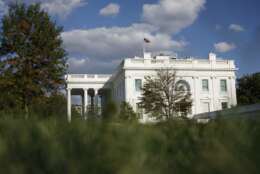cost of living adjustment
-
The White House's proposal would eliminate a long-time benefit which provides “gap” payments to employees, like federal firefighters, forced to retire as early as age 57.
February 27, 2020 -
One of the great fears of people planning for retirement is running out of, or low on money while they are still breathing.
February 21, 2020 -
While there are some really dangerous federal jobs, including law enforcement officers, firefighters and prison personnel, even the 9-to-5 office positions are pretty scary now.
February 20, 2020 -
In what’s become the administration’s evergreen budget plan, the White House has again proposed that federal workers kick in more of their salary toward their retirement plan in return for smaller lifetime annuities that are frozen when they retire.
February 12, 2020 -
No one gets paid what they deserve. But everyone deserves a little stability.
February 11, 2020 -
President Donald Trump's proposed 1% across-the-board federal pay raise is an attempt to meet Congress "halfway" on the topic, as the administration also recommended more agency funding on employee performance rewards and bonuses.
February 10, 2020 -
NARFE president Ken Thomas says last year's White House budget proposal “breaks promises to both current and future retirees."
February 04, 2020 -
Many people decided to ride out the Great Recession so they could miss the downside and return to the TSP's C, S and I stock funds when things got better. Eleven years later, some still haven’t returned.
January 13, 2020 -
Federal workers this month are getting a 3.1% total pay and federal-postal retirees are getting a 1.6% cost of living adjustment.
January 03, 2020 -
To protect their annuities from the ups and downs of the stock market, many active and most retired federal-postal workers have a major chunk of their Thrift Savings Plan account in the Treasury securities G fund.
January 02, 2020 -
Only about 12,300 service members will receive cost of living adjustments in 2020.
December 20, 2019 -
In today's Federal Newscast, the Thrift Savings Plan wants to change the rate it currently uses to calculate some annual cost of living adjustments.
December 20, 2019 -
White collar federal civil servants are on track to get a 3.1% pay raise next year — the largest in a decade for 1.2 million civil servants.
December 20, 2019 -
Most experts would say it depends on your age, when you plan to retire, and, very important, your risk tolerance.
October 21, 2019 -
Is the government using the wrong measuring tool to track inflation and thus producing the wrong cost of living adjustments?
October 18, 2019















